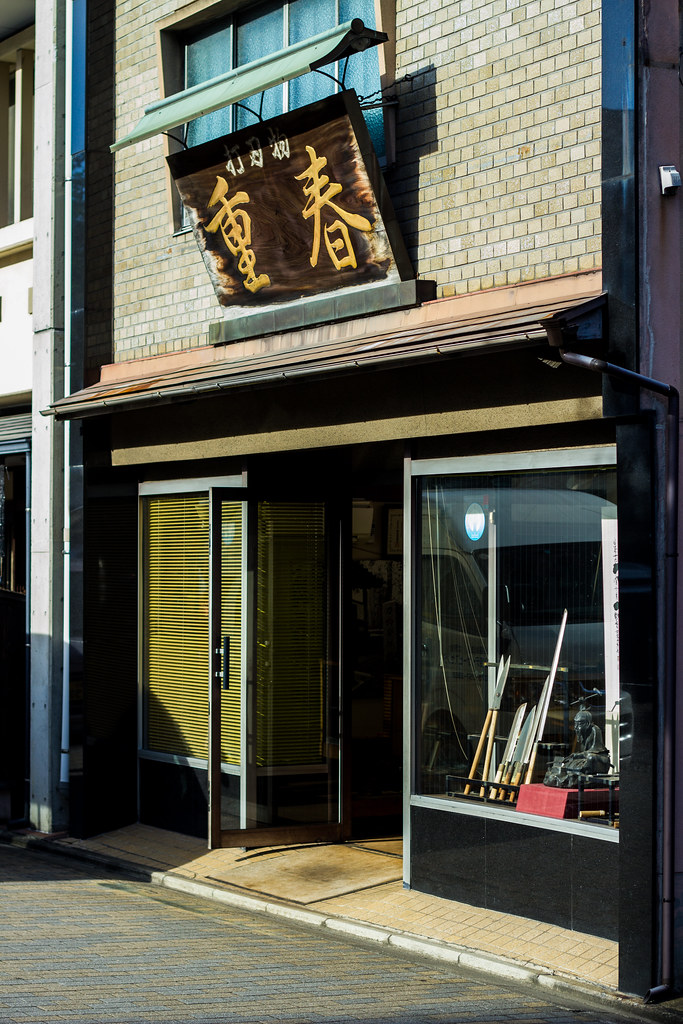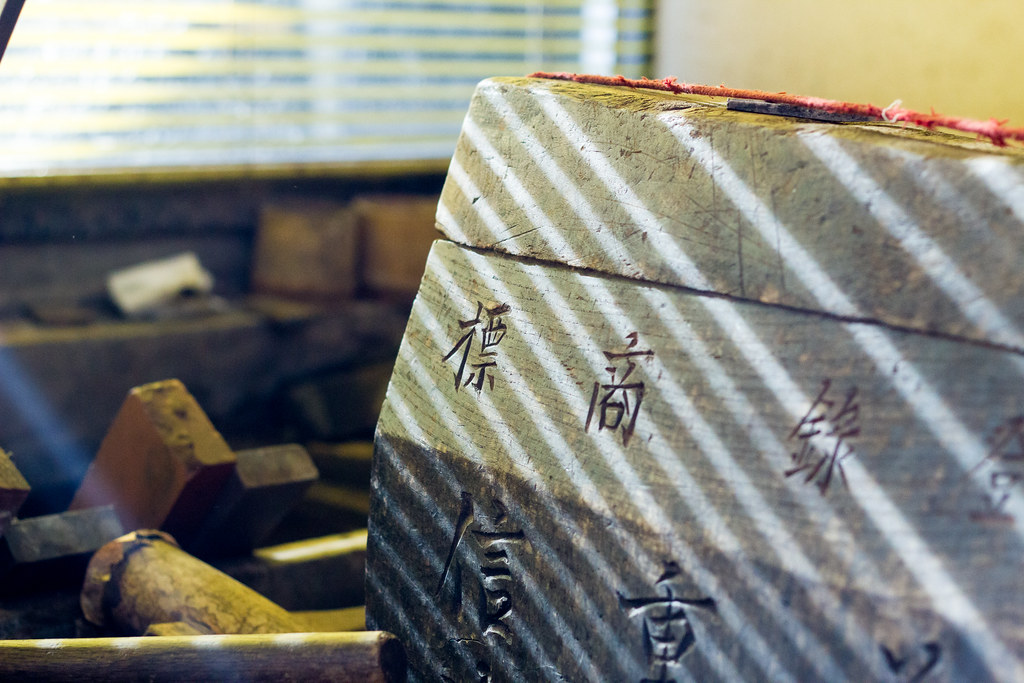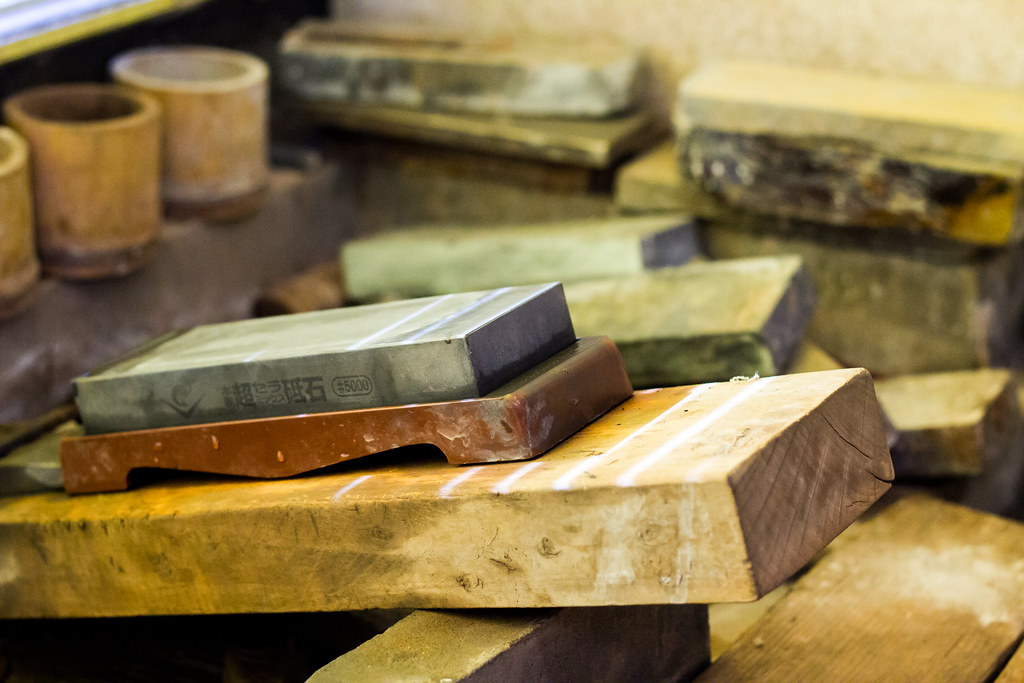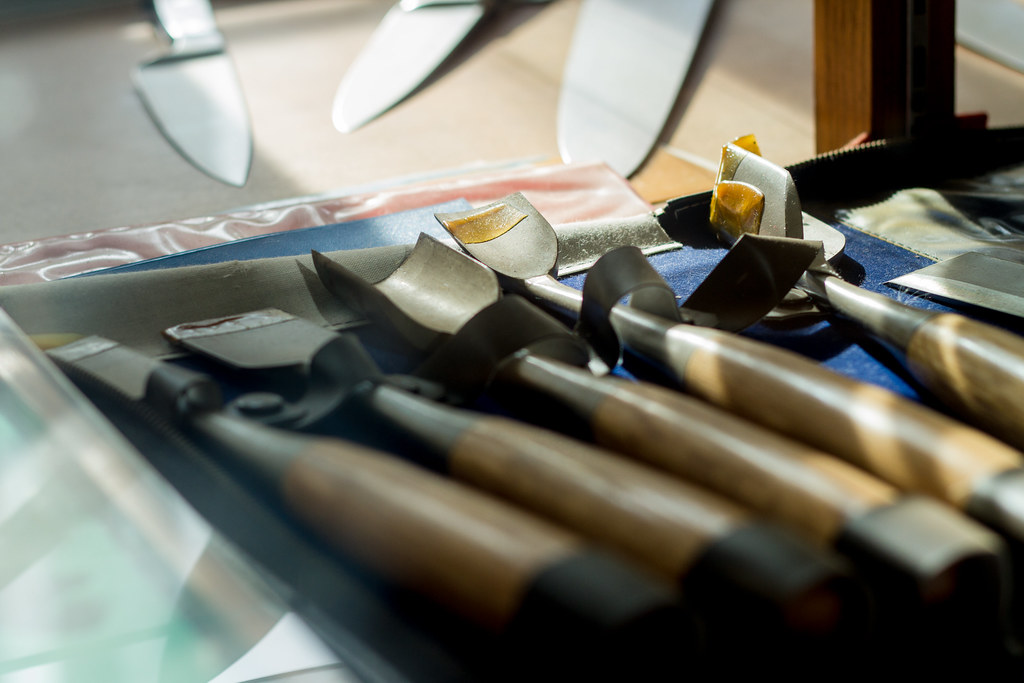This is the first part of a two part series on purchasing kitchen knives in Kyoto, Japan. The second post can be found here.
" It requires a genuine fight to produce one well designed object of relatively permanent value" - George Nakashima
My kitchen here in Seoul is more taciturn than welcoming. It’s a small galley kitchen pushed up against the South wall of my long, narrow, light filled studio, just a row of appliances picked out by the apartment managers for functionality and economy. I have not added much to it over the three quarters of a year I’ve been here - just a few necessities, and I’ve been surprised that I’ve been able to cook so well with so little kitchen equipment.
When I arrived here, the kitchen was outfitted with two sub par knives. I hacked my way through my first six months with them, chipping into carrots, using the dangerous tactic of wedging the knife into a sweet potato, and then slamming the whole unit, knife plus potato onto the cutting board with several loud THWACKS to slice them into french fries. Tomatoes and more delicate vegetables were simply crushed into asymmetric blobs. There was no hope with these knives so I didn’t even try.
My chopping became more desperate as the summer produce hit the market near my house in Korea the new vegetables and fruit sat in their farm-dirt-still-on glory in front of the adjumma vendors sitting under sun umbrellas. I took home bagfuls for various meals - more sweet potato fries, attempts at traditional Korean cold noodles and stews, french cuisine inspired pan seared veggies, sautéed peppers and eggplants. I had a couple of close calls when I almost smashed my fingers with the knives, and I’d mutter under my breath, “This wouldn’t be happening if I had my knives from America. I need new knives.”
And then Kyoto came at the tail end of a trip to Japan full of food, drink, delicacies, and expertly prepared plates. After Tokyo and Kanazawa, Kyoto held such soul, craftsmanship, and so many sharp pointy objects used to create - it seemed that everywhere I looked people in Kyoto were making. Some were cooking, some were weaving. Some were putting together temples using Miyadaiku, a centuries old technique that involves complicated wooden joins. There were potters, leatherworkers, clothing designers, and they were all mixed up in this city, low and spread out, sitting between mountains and temples and flashes of red and gold, withering in the July heat.
I knew I would be shopping for knives here and I had done my research before coming. I set out to Shigeharu (重春), one of the oldest knife stores in Kyoto. Shigeharu’s founding dates back to the Kamakura period (1190-1329), and the family initially started as sword makers.
When I walked into Shigeharu I was immediately struck by the fact that there were more tools in the shop than knives. I recognized many of them as woodworking and leather working tools, and noticed a pile of planers and chisels in the corner near an old stone basin and stacks of whetstones where the tiny, elderly shop proprietor had been sharpening these things prior to my arrival. He had a curious face, clear eyes, and warm, worn hands with short fingernails. They were immaculately clean.
He didn’t speak any english, but we communicated using a translation app on my phone and his precise detailed illustrations. To show what, I walked to the kitchen knives and pointed to a few of them - I was specifically looking for an all purpose chef’s knife to add to my set at home and carry me through the rest of my culinary adventures here in Korea.
My only experience buying knives had been six years before where I simply walked into Macy’s and bought a kitchen-worthy set of J.H. Henkel knives with as much money as I could spare, some several hundred dollars. Buying a handcrafted carbon steal knife was a different story. Even though I had my research, there’s only so much you can learn from the internet - the rest has to be learned through experience and time spent with the creators.
The shopkeeper patiently worked through the difference in quality, in steel, in composition, and in the uses of the knives. He encouraged me to pick each of the knives up and took my hand, opened it up, and set the knife handle in it, closing each finger around it. He nodded his approval and said, “Good” in Japanese - “Ee.” He motioned to me to start rocking the knife itself back and forth, to feel the movement and the weight.
Like so much else in Japan, the experience was completely tactile, meant to spark a feeling that what you were purchasing was good and right, that things worked as they should, and that beyond objects, they were extensions of your self meant to fit into the already constructed fabric of your life, not to define it with it’s newness or shine.
When I picked up the third knife he had pulled out of the case I knew that was the right knife - steel carbon, hand made, wooden handle. The weight and construction of the knife and the balance of it felt fluent in my hand. Unlike the other knives I did not feel like I needed to move my wrist to cut, the way it fit in my hand was not fatiguing, and when I flipped it left and right it felt controlled, but assisted, like driving a luxury car. The shop keeper stood near and nodded again, and I could see that he understood without speaking that one clicked with me as he started bundling up the other knives and preparing this particular one to be sharpened. He then boxed it up, wrapped it in paper, and sealed it with a foil seal as I pulled out the Yen I had brought to pay him; Shigeharu does not take credit cards.
That evening I took a woodworking class (at a bar!) from a gentleman I met who puts together temples using the traditional techniques. He had asked me about my day and I described going to get a kitchen knife at Shigeharu. He nodded, expressing his familiarity with the store, but added that I might want to visit the place he goes to get his woodworking tools sharpened, a smaller, less storied shop called Kayakawa Hamonoten.
You can find the shop on Horikawa Street between Sanjo and Oike Streets, on the east side. If you find yourself at the Nijo Caslte gate, walk south for about five minutes. It will be on the left side of the street.








0 komentar:
Posting Komentar